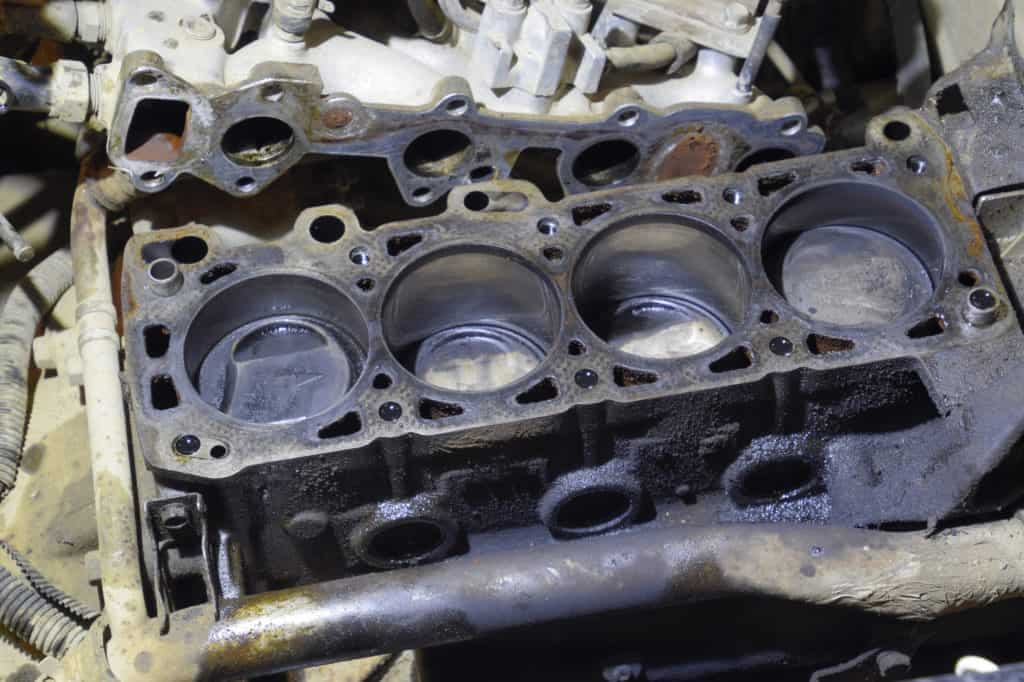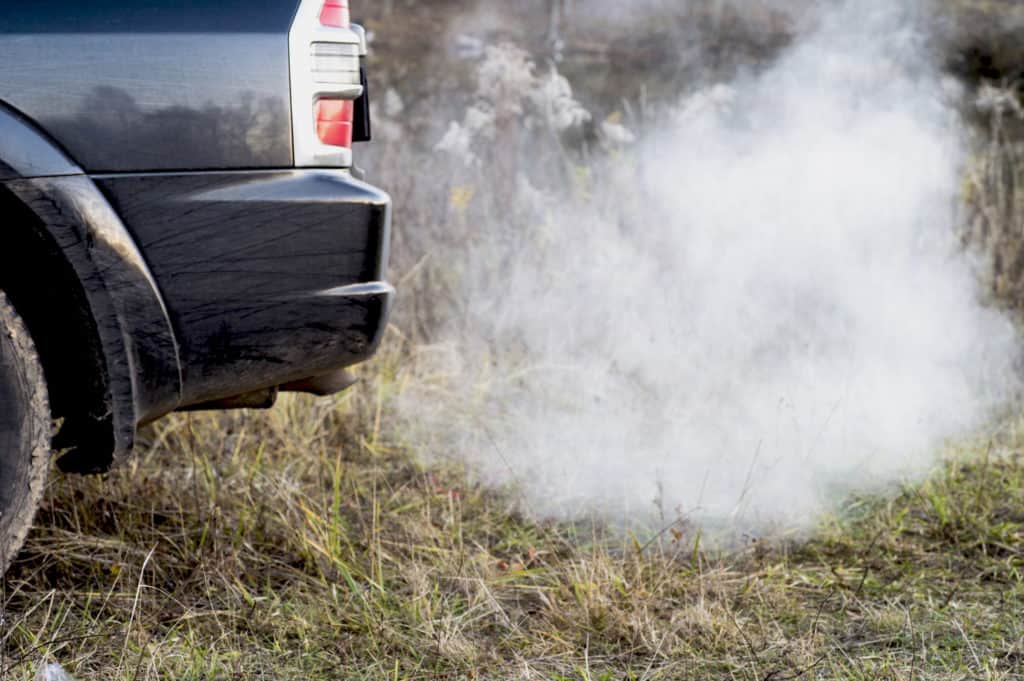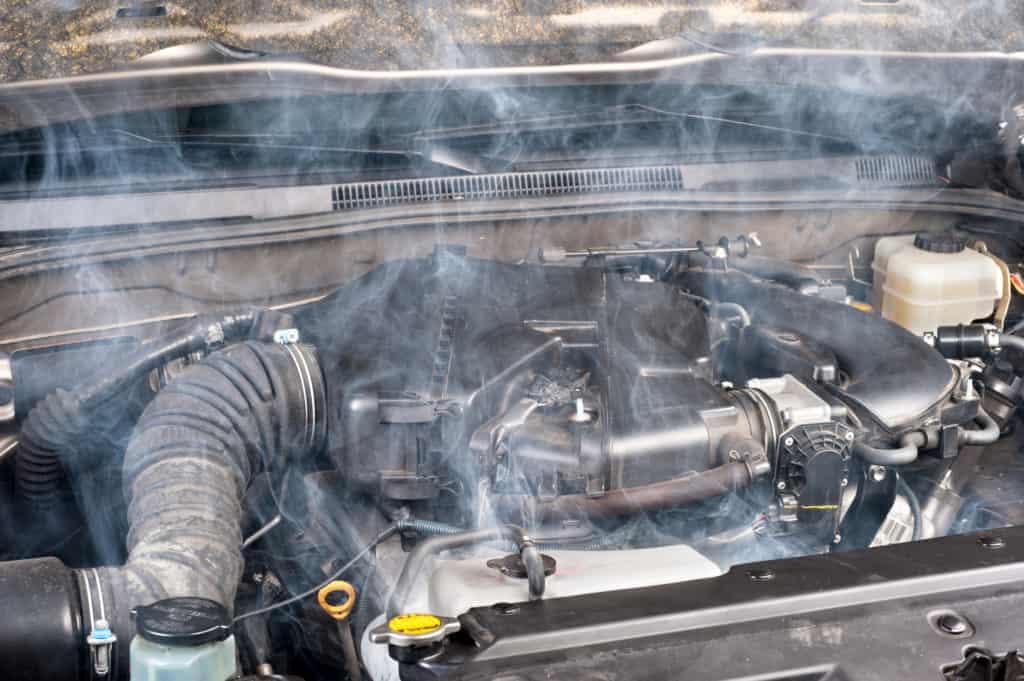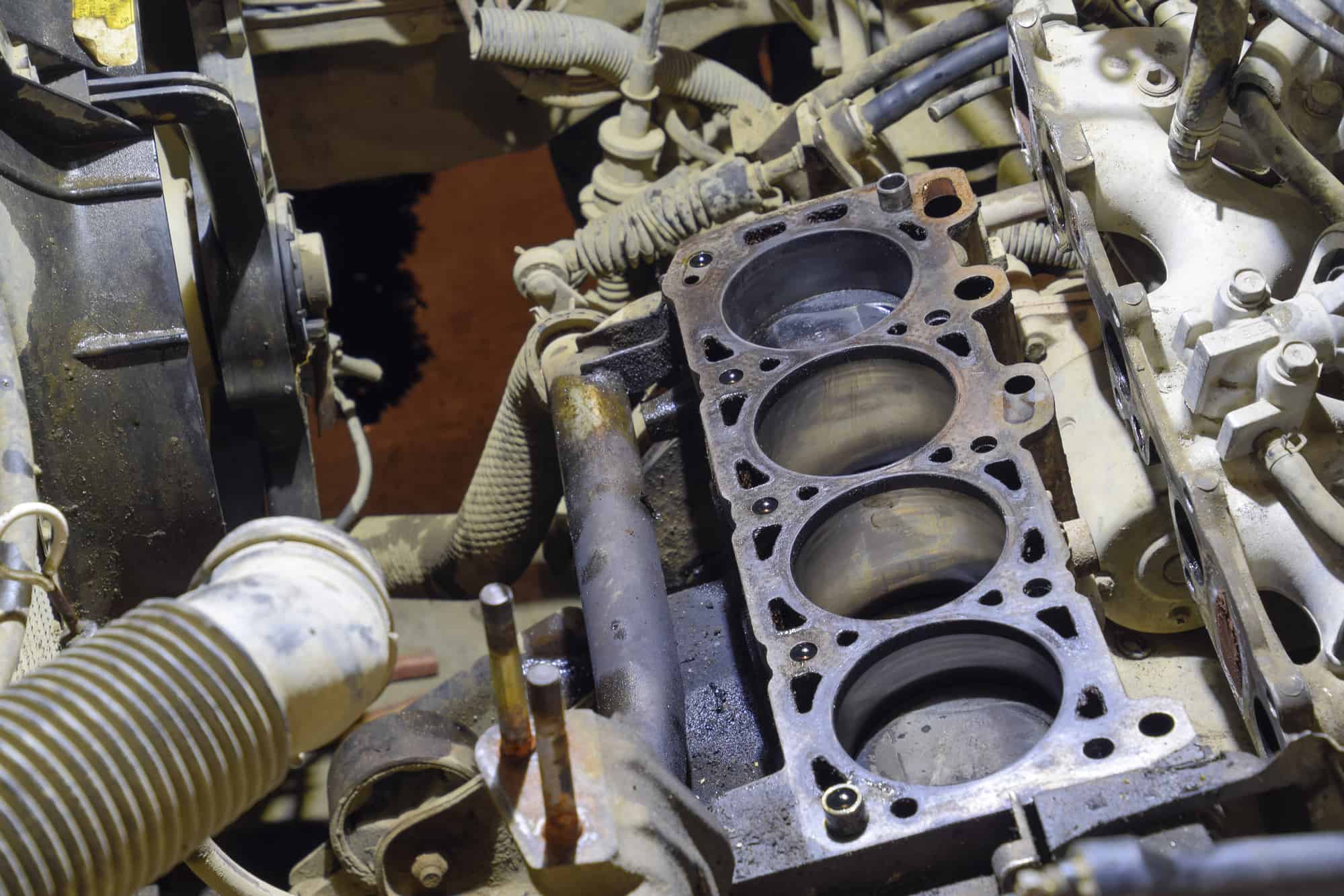A blown head gasket is one of the worst scenarios you can face as a car owner. When it comes to driving with a blown head gasket, the answers might differ depending on the severity of the problem and the symptoms it presents.
In general, it is not recommended to drive a car with a blown head gasket. Doing so will almost certainly cause the engine to overheat and this will cause serious damage to the engine block and the cylinder head. You also risk running the engine without adequate lubrication and this can damage the engine permanently.
It’s crucial to recognize the signs of a blown head gasket, such as white exhaust smoke, milky oil, or an overheating engine, as catching it early could prevent further damage.
Some drivers might continue to use their car with a blown head gasket, but doing so will likely cause more harm in the long run, potentially leading to costly repairs or engine replacement.
Can You Drive With a Blown Head Gasket?
Driving with a blown head gasket is not recommended due to the potential damage it can cause to your engine.
However, it’s important to understand how long you might be able to drive with this issue and what risks you’re taking by doing so.
What is a head gasket and what is its function within an engine?
A cylinder head gasket is a special seal or gasket that sits between the engine block and the cylinder head. Its primary function is to create a seal between the two mating surfaces of the engine block and cylinder head, which helps to prevent oil, coolant, and compression gases from leaking out of the engine.

The cylinder head gasket is designed to withstand high temperatures and pressures, and it must be able to seal the combustion gases within the cylinders while also preventing coolant or engine oil from leaking into the cylinders.
When the head gasket fails, the coolant may enter the combustion chamber, leading to engine overheating, decreased performance, and even complete engine failure.
How long can you drive with a blown head gasket?
The length of time you can drive with a blown head gasket varies, depending on the severity of the problem, and how much of a risk you are willing to take.
In most cases, you should not drive at all if you thing the cylinder head gasket is damaged, however, you might be able to drive for a short distance, such as a few miles, before the engine overheats or seizes.
What happens if you keep driving with a blown head gasket?
If you keep driving with a blown head gasket, it will cause serious damage to the engine block and engine components such as the pistons, valves and camshafts.
A blown head gasket means that the seal between the engine block and cylinder head has been broken, damaged, or cracked, which can allow engine coolant, oil, and compression gases to potentially mix together or leak out of the engine. This can lead to a variety of problems, including:
- Overheating: A blown head gasket can cause engine coolant to leak out of the engine, which can lead to overheating. Overheating can cause further damage to the engine and may even cause it to seize or fail completely. It can also cause further damage to the engine, potentially leading to warping or cracking of the cylinder head.
- Damage To Catalytic Converter: Coolant leakage into the engine combustion chamber may occur, leading to poor engine performance, misfires, and white smoke coming from the exhaust. The coolant contamination can also cause the spark plugs and catalytic converter to fail prematurely.
- Loss of power: A blown head gasket can cause a loss of compression in the affected cylinders, which can lead to a loss of power and poor engine performance.
- Lack Of Adequate Lubrication: Oil and coolant can mix due to the compromised head gasket, which is detrimental to both the cooling and lubrication systems of the engine. The contaminated oil loses its lubrication properties, accelerating wear on the internal components, while the coolant becomes less effective at dissipating heat, contributing to overheating.
- Engine misfires: A blown head gasket can cause coolant or oil to leak into the cylinders, which can lead to engine misfires and other problems.
- Damage to other engine components: A blown head gasket can cause coolant or oil to leak into other parts of the engine, which can cause damage to other components such as the bearings or pistons.
Driving with a blown head gasket might seem like a good temporary solution, but the risks and potential damage to your engine far outweigh any short-term convenience as a blown head gasket can cause permanent damage to your engine and may even lead to a complete engine failure.
What Are The Signs of a Blown Head Gasket?
There are several obvious symptoms of a blown head gasket that are easy to spot. Being able to recognize the signs of a blown head gasket can help you take action before the situation worsens. Here are some indicators:
1. White smoke from the exhaust
White smoke from the exhaust can be a sign of a blown head gasket because a blown head gasket can cause coolant to leak into the combustion chamber of the engine. When the coolant mixes with the fuel and air in the combustion chamber, it creates a white smoke that comes out of the exhaust.

This smoke may have a sweet smell to it, which is a characteristic odor of engine coolant. The white smoke is typically most noticeable when starting the engine and may dissipate as the engine warms up. However, if a blown head gasket is the cause of the white smoke, it will continue to occur until the issue is resolved.
2. Milky engine oil
Milky engine oil can be a sign of a blown head gasket if the blown head gasket has allowed coolant to leak into the engine oil. When the coolant mixes with the engine oil, it creates a milky or creamy appearance to the oil on the dipstick or under the oil filler cap.
This is because coolant is a different color and consistency than engine oil, and the two substances do not mix well. Milky engine oil is typically a sign of a serious problem, as engine oil is responsible for lubricating and protecting the engine’s internal components.
If the engine oil is contaminated with coolant, it can no longer perform its function properly and can cause further damage to the engine.
3. Loss of coolant
Loss of coolant can be a sign of a blown head gasket because a blown head gasket can cause coolant to leak out of the engine. The head gasket creates a seal between the engine block and the cylinder head, and when it fails, it can allow coolant to leak out of the engine.

If you notice that your car’s coolant level is consistently low, it could be a sign of a head gasket that is leaking. There are other possible causes of coolant loss, such as a leak in the cooling system or a faulty radiator cap.
However, if you are experiencing other symptoms of a blown head gasket, such as overheating, white smoke from the exhaust, or milky engine oil, loss of coolant is more likely to be a sign of a blown head gasket.
4. Overheating
An overheating engine can be a sign of a blown head gasket if the blown head gasket is allowing coolant to leak out of the engine because when coolant leaks out of the engine, it can cause the engine to overheat.
If you notice that your car’s temperature gauge is reading higher than normal or that your car is overheating, it could be a sign of a blown head gasket.
Some other possible causes of engine overheating include a faulty thermostat or a malfunctioning cooling fan.
However, if you see the other common symptoms of a blown head gasket, such as white smoke from the exhaust, milky engine oil, loss of power, or engine misfires, the engine overheating is more likely to be a sign of a blown head gasket
5. Poor engine performance
Poor engine performance can be a sign of a blown head gasket because a blown head gasket can cause a loss of compression in the affected cylinders. The head gasket creates a seal between the engine block and the cylinder head, and when it fails, it can result in a combustion gas leak from the engine.
When the engine loses compression, it can cause poor engine performance, such as a loss of power or acceleration, rough idling, or engine misfires.
If you notice that your car is not performing as well as it used to, or if you are experiencing other symptoms of a blown head gasket the poor engine performance may be a sign of a blown head gasket.
What Next – Diagnosing And Fixing a Blown Head Gasket
Diagnosing and fixing a blown head gasket can be a difficult and complex process that requires specialized knowledge and tools.
When diagnosing a blown head gasket, it’s essential to check for coolant and oil mixing. Symptoms include milky-looking oil or frothy coolant, which may indicate a possible leak between oil and coolant passages.
A mechanic will also need to perform a variety of tests, such as a compression test, a leak-down test, or a cooling system pressure test. These tests can help to determine the location and severity of the head gasket failure.
Once the head gasket has been diagnosed, repairing it can also be a complex and expensive job. In some cases, the cylinder head may need to be removed and machined, and the head gasket and other related components may need to be replaced.
The cost of repairing a blown head gasket can vary depending on the severity of the damage and the type of engine. In most cases, you can expect to pay between $1000 and $2000 for the repairs. However, if the damage is severe, you may need to replace the cylinder head or engine entirely, which can cost upwards of $5000.
Can You Use Sealants Or Additives To Fix A Blown Head Gasket?
While not a permanent solution, some commercially available sealants and additives may temporarily fix minor head gasket leaks. These products can be added to the coolant or oil and often contain chemical compounds that react with heat and pressure to seal minor leaks.
- Pros: Affordable and easily accessible
- Cons: Temporary solution, may not work for more severe leaks
How Much Does It Cost To Repair A Blown Head Gasket?
Repairing a blown head gasket can be expensive, with costs ranging from $1,000 to $2,000 or more depending on the vehicle make, model, and labor charges. The following table provides a general estimate of costs based on part pricing and labor hours:
| Part | Cost Range |
|---|---|
| Head Gasket Kit | $100 – $500 |
| Labor Hours | 10 – 20 hours |
| Labor Cost | $800 – $1,600 |
| Total Cost | $1,000 – $2,000+ |
What Are The Engine options If The Engine Is Damaged Beyond Repair After The Cylinder Head Gasket Blows?
If the engine is damaged beyond repair after a cylinder head gasket blows, you have a few engine replacement options:
- Fit A New Engine: One option is to replace the damaged engine with a brand new engine from the manufacturer.
- Remanufactured Engine: Another option is to replace the damaged engine with a remanufactured engine. A remanufactured engine is an engine that has been disassembled, cleaned, and rebuilt with new parts to meet the manufacturer’s specifications. This can be a more cost-effective option than a new engine.
- Fit A Used Engine: A third option is to replace the damaged engine with a used engine from a salvage yard or other source. This can be the most cost-effective option, but it can also be risky, as you may not know the condition of the used engine or how it was maintained.
- Rebuild The Damaged Engine: If the engine damage is not too severe, you may be able to rebuild the engine instead of replacing it. This involves disassembling the engine, cleaning and inspecting the parts, and replacing any damaged or worn parts. This can be a more cost-effective option than a new or remanufactured engine, but it can also be time-consuming and may not be possible if the damage is too severe.
Ultimately, the best engine replacement option will depend on the condition of the car, the cost of the replacement engine, and your personal budget.







I recently noticed white smoke coming from my car’s exhaust and a slight sweet smell accompanying it. Considering my car’s been acting up lately with occasional overheating, I’m worried I might have a blown head gasket. What would be the most accurate way to diagnose this issue before taking it to a mechanic?
My car recently started overheating and showing white smoke from the exhaust, and a mechanic suggested it might be a blown head gasket. What’s the first step I should take to diagnose this issue myself before deciding on repairs?